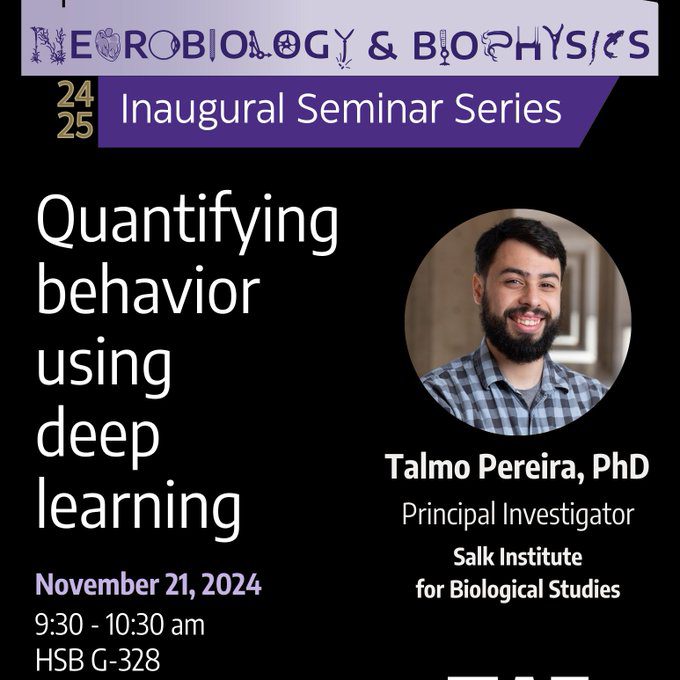Quantifying Behavior Using Deep Learning
Join us at the upcoming NBIO seminar on November 21, where Talmo Pereira, Principal Investigator at the Salk Institute for Biological Studies, will deliver an insightful talk on ‘Quantifying behavior using deep learning’. This seminar promises to delve into the intersection of neuroscience and artificial intelligence, highlighting the transformative potential of deep learning in understanding and quantifying behavior.
The Role of Deep Learning in Neuroscience
Deep learning, a subset of artificial intelligence, has revolutionized various fields, including neuroscience. By leveraging neural networks, researchers can now analyze complex behavioral patterns with unprecedented accuracy. Talmo Pereira’s work at the Salk Institute exemplifies this advancement, as his research focuses on developing deep learning models to quantify and interpret animal and human behaviors.
Applications in Neurodegenerative Disease Diagnosis
The application of deep learning extends beyond behavior quantification. For instance, the Indian Institute of Technology-Guwahati (IIT Guwahati) has developed a novel algorithm, the Unique Brain Network Identification Number (UBNIN), to code brain connectivity patterns of healthy and Parkinson’s patients. This algorithm holds promise for advancements in diagnosing and treating neurodegenerative diseases, showcasing the broader impact of AI in healthcare. IIT Guwahati’s novel algorithm.
Deep Learning and Biomarker Testing
In the realm of medical research, deep learning is also being utilized to improve biomarker testing for neurodegenerative diseases. For example, the Banner Sun Health Research Institute is exploring current and future directions in biomarker testing for atypical Parkinsonism. These advancements could significantly enhance patient care by enabling earlier and more accurate diagnoses, leading to more effective treatment strategies. biomarker testing for atypical Parkinsonism.
Innovations in Brain Stimulation Techniques
Another exciting development in neuroscience is the use of brain stimulation techniques like cortico-cortical paired associative stimulation (ccPAS). Researchers have developed non-invasive methods to enhance or hinder effective connectivity in specific brain pathways, potentially leading to new therapeutic applications for neurological impairments and social dysfunction disorders. brain stimulation techniques.
AI’s Impact on Language Learning and Communication
AI’s influence is not limited to neuroscience and healthcare. Researchers at New York University (NYU) have trained an AI model to learn through a child’s eyes and ears, mimicking language acquisition processes. This innovative approach could revolutionize AI’s role in language learning and child development research. AI model for language learning.
Related Articles
- Mapping Tree Species with AI: A Global Initiative
- Redefining Data Intelligence at Internet Scale with Neuro-Symbolic AI on Polkadot
- Model-Based Design AI to Accelerate Medical Innovation
- Model-Based Design AI to Accelerate Medical Innovation
- Beyond Chatbots: Advanced NLP Techniques for More Natural App Interactions
Looking for Travel Inspiration?
Explore Textify’s AI membership
Need a Chart? Explore the world’s largest Charts database
